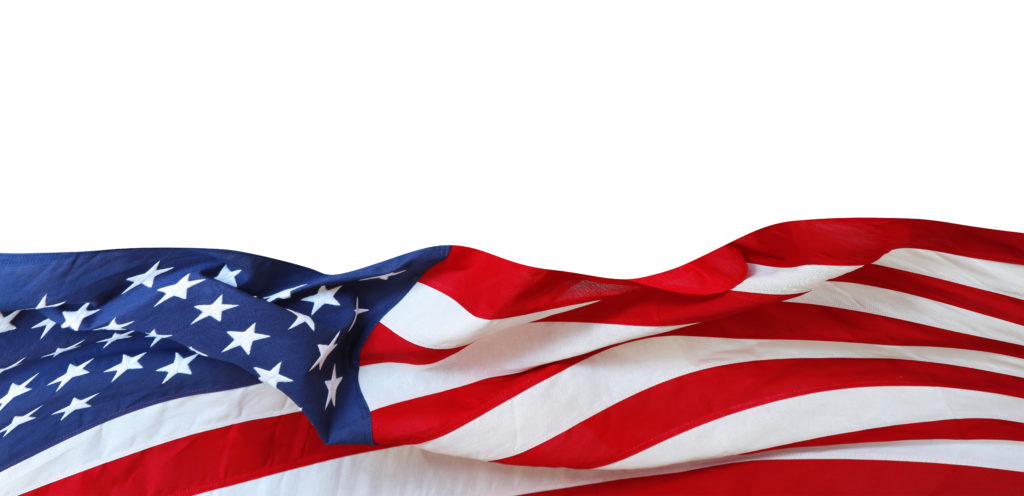CBP Enforcement of Intellectual Property Trademarks
CBP Enforcement of Intellectual Property – Trademarks
CBP Enforcement of Intellectual Property – Trademarks
CBP is vested with the authority to exclude from entry, detain and/or seize violative trademarked merchandise. In this regard, CBP recognizes three levels of infringement in its enforcement of trademarks: counterfeit marks; copying or simulating marks; and restricted gray market goods (i.e., parallel imports).
Counterfeit Marks
A counterfeit mark is defined as a spurious mark that is identical with, or substantially indistinguishable from, a federally registered and recorded trademark. Merchandise imported into the United States bearing marks “counterfeit” of a federally registered trademark recorded with CBP shall be seized and forfeiture proceedings instituted. Such merchandise shall be seized and, absent the trademark owner’s written consent to import the merchandise, forfeited for violation of customs laws. After forfeiture, CBP shall destroy the merchandise.
In-Depth Coverage: Marketing and Advertising Compliance
- Federal Trade Commission (FTC) Advertising Rules
- Made in USA Standard
- FTC Regulation on Environmental Claims
- Adverting and Marketing on the Internet
- Label Claims for Conventional Foods and Dietary Supplements
- Dietary Supplement Advertising: What is FTC's Truth-in-Advertising Law?
- USDA Country of Origin Labeling (COOL)
- FTC Rules & Regulations on Food Advertisement
Alternatively, if the imported merchandise is safe, poses no health hazard, and the trademark owner consents, CBP may obliterate the counterfeit mark where feasible and dispose of the seized goods by
(1) delivering the merchandise to any Federal, State, or local government agency,
(2) donating the merchandise to a charitable institution, or
(3) selling the merchandise at public auction provided more than 90 days have passed since the date of forfeiture, and no Federal, State, or local government agency or charitable institution has a need for such merchandise.
CBP may impose a civil fine against any person who directs, assists financially or otherwise, or aids and abets the importation of merchandise bearing a counterfeit mark that is seized. Where administratively feasible and appropriate, CBP is authorized to seize merchandise bearing a mark that is counterfeit of a federally registered trademark that is not recorded with CBP.
In-Depth Coverage: Country of Origin
- Country of Origin of Imported Merchandise
- Customs Ruling: Country of Origin
- Country of Origin: Food Products
- Country of Origin: Chemical and Pharmaceutical Products
- Country of Origin & Country of Manufacture: CBP vs. FDA
- Country of Origin: Substantial Transformation or Country of Assembly Test
- Country of Origin and Free Trade Agreement
- Country of Origin and Section 301
Copying or Simulating Marks
In addition, a copying or simulating mark or trade name is one that so resembles a recorded mark or name as to be likely to cause the public to associate the copying or simulating mark or name with the recorded mark or name. Merchandise bearing a copying or simulating mark is subject to detention and possible seizure.
Specifically, merchandise bearing a copying or simulating mark shall be denied entry and detained for 30 days from the date on which the goods are presented for examination by CBP, during which time the importer shall be afforded the opportunity, before expiration of the 30-day period, to establish that any of the circumstances are applicable, e.g., the objectionable mark is removed or obliterated as a condition to entry in such a manner as to be illegible and incapable of being reconstituted, or the recordant gives written consent to importation of the merchandise.
If the importer has not obtained release of the merchandise within the 30-day detention period, the merchandise shall be seized and forfeiture proceedings instituted. Imported merchandise or packaging in which trademark or trade name violations are involved may be seized and forfeited. Merchandise bearing a mark which is confusingly similar to a trademark registered with the United States Patent and Trademark Office, but which is not recorded with CBP is not subject to detention or seizure.
In-Depth Coverage: Importing Cosmetics
Restricted Gray Market Articles (”Parallel Imports”)
Gray market goods are defined as foreign-manufactured goods bearing a genuine trademark or trade name identical with, or substantially indistinguishable from, one owned and recorded by a citizen of the United States or a corporation or association created or organized within the United States which are imported into the U.S. without the authorization of the U.S. trademark owner.
In other words, gray market goods are genuine products bearing a trademark/name which has been applied with the approval of the right owner for use in a country other than the United States. Goods bearing counterfeit marks, on the other hand, are never genuine as these are marks (identical to or substantially indistinguishable from the genuine trademark) which have been applied without the authority of the trademark/trade name owner.
Only trademarks and trade names that are recorded with CBP are entitled to gray market protection. Gray market status is determined at the time of recordation with CBP. Gray market protection is conferred where (1) the U.S. and foreign trademarks are not owned by the same person, and (2) the U.S. and foreign trademark owners are not a parent or subsidiary, or otherwise subject to common ownership or control. “Common ownership” means individual or aggregate ownership of more than fifty percent of the business entity. “Common control” means effective control in policy and operations and is not necessarily synonymous with common ownership.
Lever Rule Protection
An exception to the common control provision of the gray market regulations is the Lever-rule. Goods bearing marks not entitled to gray market protection, and thus allowed unrestricted importation, may, in certain cases, be refused entry into the United States when it is established that such goods are “physically and materially” different from goods produced for the U.S. market under authority of the U.S. trademark owner.
Part 133 of CBP regulations provides that, even in affiliate exception cases, upon application of the trademark owner and a finding that specific gray market goods are“ physically and materially” different from goods authorized by the U.S. trademark owner for importation into the U.S., CBP will restrict the importation of the gray market goods. In this instance, gray market goods will only be permitted entry into the commerce of the United States if the labeling requirements set forth in 19 CFR § 133.23(b) have been satisfied.
When applying for Lever-rule protection for specific products, a trademark owner must
(1) state the basis for this claim with particularity;
(2) support the claim by competent evidence; and
(3) provide CBP with summaries of the alleged physical and material differences that exist between the merchandise authorized for sale in the United States and those intended for other markets.
“Physical and material” differences between merchandise authorized for sale in the United States and those intended for other markets may include, but are not limited to:
- The specific composition of both the authorized and gray market product(s)(including chemical composition);
- Formulation, product construction, structure, or composite product components, of both the authorized and gray market product;
- Performance and/or operational characteristics of both the authorized and gray market product;
- Differences resulting from legal or regulatory requirements, certification, etc.;
- Other distinguishing and explicitly defined factors that would likely result in consumer deception or confusion as proscribed under applicable law.
Personal Use Exemption from Trademarks Restrictions
A traveler arriving in the United States with merchandise bearing a protected trademark may be granted an exemption to the import restrictions. Under the personal use exemption, a traveler may import one article of the type bearing a protected trademark. For example, a person arriving in the U.S. with three watches bearing an unauthorized mark (whether each watch bears the same mark or different marks) is allowed to retain only watch.
This exemption applies to goods bearing a counterfeit or confusingly similar version of a registered and recorded trademark, or otherwise restricted gray market article. The exemption is applicable only if the article (1) accompanies a traveler to the United States, (2) is for personal use and not for sale, and if (3) the traveler has not been granted an exemption for the same type of article within 30 days preceding his or her arrival.
For more detailed information, please refer to the Informed Compliance Publication ‘’CBP Enforcement of Intellectual Property Rights’’ and CBP website.
Read more about CBP Enforcement of Intellectual Property
Guidance on customs & logistics solution for traditional and e-commerce importers and exporters
Importer Security Filing (ISF)
An ISF is required when cargo (ocean only) laden on vessel at a foreign port is destined for shipment into the U.S. Under ISF rule, some details regarding cargo must be transmitted to the CBP at least 24 hours before goods are loaded onto the vessel, or at least 24 hours prior to the departure to the U.S.
Freight Forwarding
Looking for a freight forwarding partner? To move your cargo from its current location through customs to its final destination we will partner with you to find the best way for your business. Whatever your transportation, logistics or customs clearance needs, we will do our best to customize a solution for your needs.
Customs Clearance
The goods imported into the U.S. are required to be declared to CBP. Our customs broker will help you stay in compliance with customs laws and regulations and clear your goods quickly and efficiently with our electronic Automated Commercial Environment (ACE) and Automated Broker Interface (ABI) Single Window System
Warehousing & Distribution
Our warehouse facility offers great potential for serving as a regional hub with over 145,000 SF storage capacity close to Los Angeles Airport & Los Angeles/Long Beach Sea port. With our extensive experience in freight services, your import/export cargo will be handled quickly and effectively.
Non-resident Importer Program
If you want to sell your products in U.S. marketplaces, but you are a business owner located outside of the U.S. and do not have an entity or presence in the U.S., you need to be established as a Foreign Importer of Record before your products can be imported into the U.S. We can help you.
Section 321 Entry
Section 321 entry allows importing free of duty and tax for shipments imported by one person on one day having a fair retail value in the country of shipment not more than $800. We provide our resident and non-resident clients with dedicated ACE eManifest solutions for Section 321 entry of all modes of transportation.
E-Commerce
The Internet has made it easy to find and purchase items from almost anywhere in the world. Our e-commerce experts will help you find the right solution for your international transportation, customs clearance, and delivery to your final destination. We also provide value-added repackaging, warehousing and distribution services.
Quick Link To U.S. Customs & Import Requirements
In-Depth Coverage: Importing Medical Device
Customs Clearance and Import Requirements
- Entry of Imported Merchandise
- What is Section 321 Entry?
- What is Automated Commercial Environment (ACE)
- What is an Automated Broker Interface (ABI)?
- Who is Ultimate Consignee?
- What is Non-Resident Importer Program?
- Country of Origin of Imported Merchandise
- What is the Country of Assembly?
- What is the FDA's Country of Manufacture?
- Marking of Country of Origin on U.S. Imports
- What is Customs Bond?
- Reconciliation Prototype and Bond Rider
- Who Needs a Customs Broker?
- What is Customs Ruling Program?
- Classification of Imported Goods
- How is imported merchandise appraised?
- What are Import Quotas?
- What are Trade Remedy Duties?
- Antidumping Duty (AD) and Countervailing Duty (CVD)
- What is Foreign Trade Zone (FTZ)?
- What is Importer Security Filing (ISF)?
- What is Temporary Importation under Bond (TIB)
- What is In-Bond Process?
FDA-Regulated Products and Import Requirements
- What is Food Safety Modernization Act (FSMA)?
- Prior Notice of Imported Foods
- Food Facility Registration
- Risk-Based Preventive Controls for Human Food
- Risk-Based Preventive Control for Animal Food
- Standards for the Growing, Harvesting, Packing, and Holding of Produce for Human Consumption
- What is Foreign Supplier Verification Program (FSVP)?
- Protect Food against Intentional Adulteration
- FDA Regulated Product in Foreign Trade Zone (FTZ)
- Entry Review Process for FDA Regulated Products
- Country of Origin VS Country of Manufacture
- Foods Regulated by FDA or USDA: What is the Difference?
- Label and Labeling Claims for Conventional Food and Dietary Supplements
- What is USDA Country of Origin Labeling (COOL)?
- Import for Export of FDA Regulated Products
- FDA Regulated Products in Personal Baggage or Sending by Mail or Courier
- International Mail Facility (IMF) and FDA Regulation
- Importing Biological Product Regulated by CBER
- Importing Cosmetics and Voluntary Cosmetic Registration Program (VCRP)
- Importing Drugs into the U.S.
- Importing OTC Drugs into the U.S.
- Importing Veterinary Drugs into the U.S.
- Importing Tobacco Products into the U.S.
- Importing Medical Devices into the U.S
- Importing Food Products into he U.S.
- Importing Radiation-Emitting Products into the U.S.

























